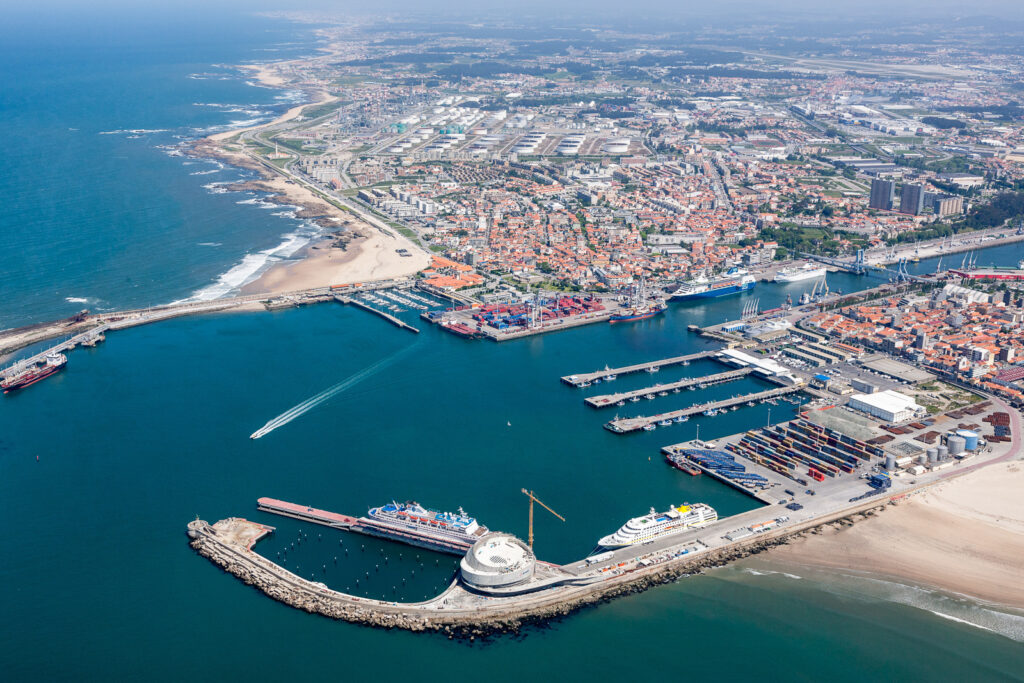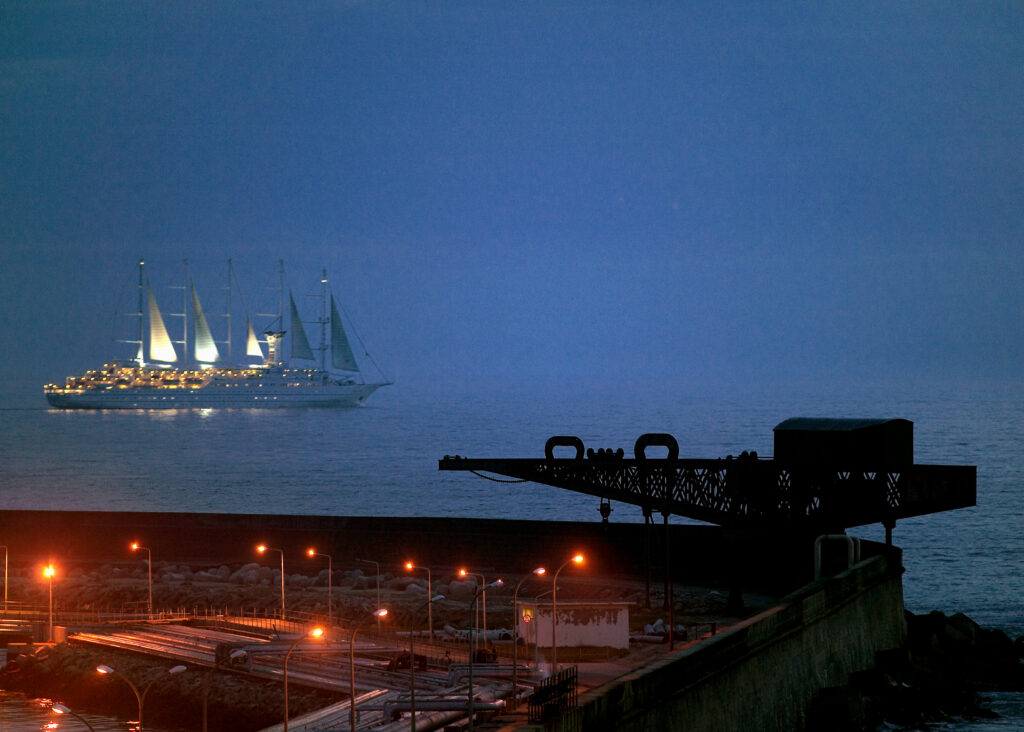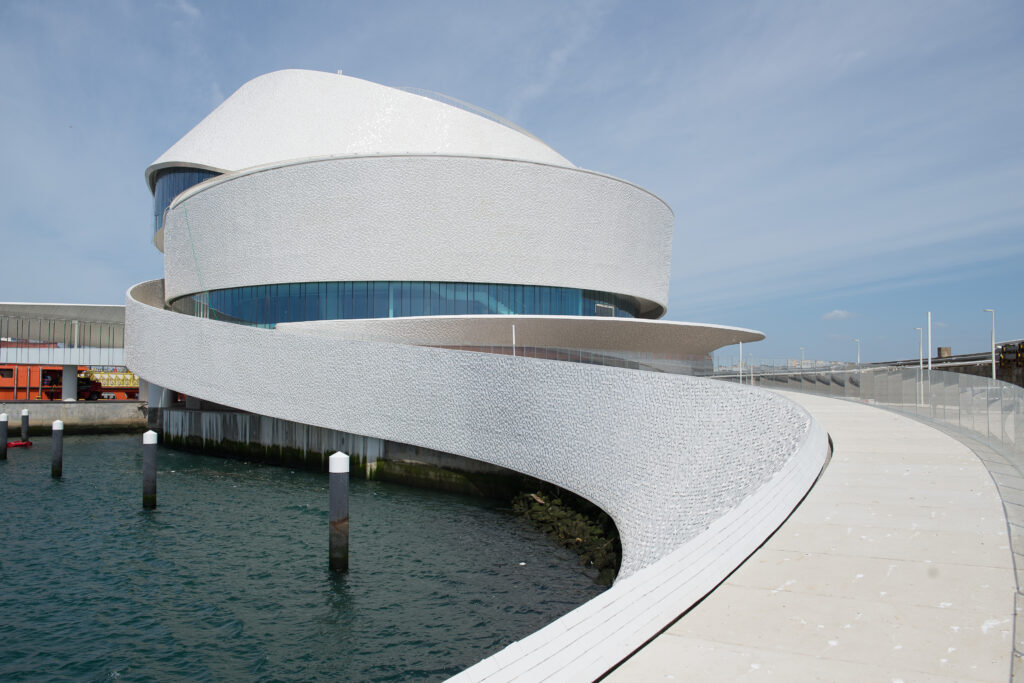╔
Cruise passengers arriving at the Port of Leixões are first greeted by the sight of the remarkable cruise terminal. Designed by Luis Pedro Silva and with its curved, circular design, its charm lies in its simplicity of form combined with complexity of purpose. The terminal is a worthy gateway to Matosinhos – as the port sits in the heart of the city – and the surrounding region with its many beautiful coastlines to explore, fantastic fish restaurants to dine in, and cultural heritage sites to visit.
It is little wonder therefore that the north region of Portugal is a popular stop for cruise guests. There are many reasons why this is good news for the city and the region.
Firstly, the cruise industry is an important source of revenue for communities in port cities and neighboring areas. There are direct economic benefits, including job creation, revenue from port fees and dues, and increased tourism spending.
Cruise tourism also offers multiplier benefits. What does this mean? Cruise passengers and crew members spend money on local goods and services, including hospitality, and shore excursions, to name a few examples. Cruise ships dock in ports for several hours or days, giving passengers ample opportunity to explore nearby cities, attractions, and heritage sites. On a typical seven-day cruise, research shows that cruise travelers spend approximately €660 during the voyage.

Aerial view of Port of Leixões and its remarkable cruise terminal. (© Matosinhos City Hall).
In fact, according to a study by the Nova School of Business and Economics, the cruise industry generated €840 million for the Portuguese economy in 2019 and supported 8,863 jobs. Across Europe, according to CLIA [1] data, the cruise sector generated €41bn economic impact during 2021 despite drastically reduced passenger volumes due to pandemic restrictions.
The cruise industry has shown its resilience with its steady return to service following its voluntary suspension during the pandemic. In 2019, the Port of Leixões registered 101 cruise ship calls and it had a strong come back after the COVID-19 pandemic, achieving a 11% growth during 2022, with 112 calls. According to APDL, the number of this cruise passengers have increased in 22%, going from 88.696 passengers in 2019 to 108.600 in 2022. Indeed, cruise continues to be one of the fastest-growing sectors of tourism and is on track to return to, and likely surpass 2019 levels, as already happened last year at Leixões.
There are also long-term benefits for the region. The cruise industry can help to promote the region as a destination. Research shows that 6 out of 10 cruise travelers return to the cities they visited for longer, land-based stays. The industry also provides opportunities for local businesses to develop and market their products and services to new, wider audiences.
Furthermore, the industry can help stimulate overall economic growth and development, particularly in areas that may be remote or underdeveloped. The growth of the cruise industry in Portugal and the north region can lead to the development of new infrastructure and amenities, such as expanded port facilities and improved transportation links.
At the same time, it is important to understand how cruise is progressing a sustainability agenda. Cruise lines are leading the way to a zero-carbon future in travel reducing emissions at berth, at sea, and during ship operations.

Research shows that 6 out of 10 cruise travellers return to the cities they visited for longer, land-based stays. (© Matosinhos City Hall).
Cruise lines are investing in innovation as part of the industry’s ambition to achieve net zero cruising by 2050. The ships being launched today are among the most technologically advanced and energy efficient in history. As part of this transformation, cruise lines are pursuing a variety of new and more sustainable alternative energy sources, including preparing their ships for electric batteries, advanced biofuels, and hydrogen fuel cells. Beyond 2023, new engines and propulsion technologies are being planned or installed for new ships entering the market through 2028.

Port of Leixões Cruise Terminal, designed by the architect Luis Pedro Silva. (© Matosinhos City Hall).
Given the benefits to be gained, it is therefore an exciting prospect that the city of Matosinhos and the Port of Leixões have the potential to develop a cruise hub for itineraries in the wider region.
Ultimately, the growth of sustainable cruise tourism should form part of an integrated, strategic development plan, that accounts for these benefits for local communities and all aspects of sustainability. In this process, collaboration between local, national, and international stakeholders in the cruise tourism ecosystem is of paramount importance.
Portugal is an important and attractive cruise destination in Europe. As a port city, Matosinhos opens the door for cruise guests from all around the world to experience its culture and society. The city and region serves as an Ambassador of Portugal to the world and I can imagine no better advocate for the country!
HEAD IMAGE | The cruise industry is an important source of revenue for communities in port cities and neighbouring áreas. (© Matosinhos City Hall).
╝
NOTE
[1] Cruise Lines International Association (CLIA) is the world’s largest cruise industry trade association, providing a unified voice and leading authority of the global cruise community. On behalf of the industry, together with its members and partners, the organization supports policies and practices that foster a secure, healthy, and sustainable cruise ship environment, as well as promote positive travel experiences for the more than 30 million passengers who cruise annually. The CLIA community includes the world’s most prestigious ocean, river, and specialty cruise lines; a highly trained and certified travel agent community; and cruise line suppliers and partners, including ports and destinations, ship development, suppliers, and business services. For more information, visit www.cruising.org or Europe.cruising.org. To find out more about the cruise industry’s sustainability agenda, with infographics, facts and figures, videos and more, visit: www.cruiseinfohub.com/.